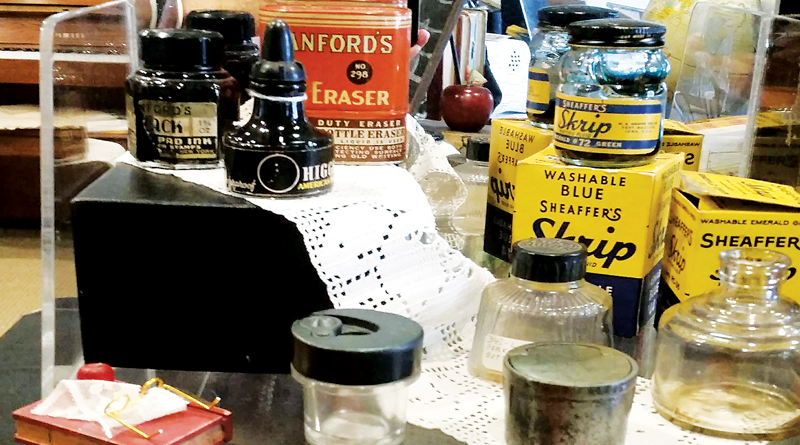The Writeful Journey Of Pens ~ The History Of Ordinary Things

In the western world, from the 6th-19th centuries, most writing instruments were “quills” made from the large wing feathers of geese, swans, and later turkeys. The hollow shaft of the feather held the ink which flowed to the tip by capillary action.
The quill’s era ended in the 1820s with the mass-produced “dip pen” which used a metal point called a “nib” attached to a round stick. The pen was dipped directly into ink and only held enough ink to write a few words. It was re-dipped to get more ink. This new pen skipped and was messy if one was not careful.
In 1827, Petrache Poenaru received a French patent for the first “fountain pen,” a nib-tipped writing tool with a refillable internal ink reservoir. The pen draws ink from the reservoir through a feed to the nib. It is deposited on paper via a combination of gravity and capillary action. Filling the reservoir with ink was done manually, often with an eyedropper or syringe.
What is ink? It is an organic or inorganic pigment or dye dissolved or suspended in a solvent. Older style writing inks use a water-based dye. Ballpoint pens use a thicker paste like oil-based dye which better allows capillary action to keep the ink flowing. These inks generally are non-smearing and quicker drying than water-based.
To address the mess of refilling the ink reservoir, a New York salesman, Lewis E. Waterman, developed the first practical fountain pen with a built-in ink supply. He introduced an efficient feed system that effectively exchanged ink and air. The success of Waterman’s fountain pen, patented in 1884, was aided by three key inventions; the iridium tipped gold nibs, hard rubber, and free flowing ink of the 1850s.
In 1892, George S. Parker started the Parker Pen Company. He patented a simplified “self-filling” mechanism (1911) followed by a leak-proof safety cap (1912). He introduced the “Lucky Curve” in 1911 which used a bent tube connecting the nib to the side wall of the ink reservoir. Parker Pen Company manufactured pens in Janesville, Wisconsin. By the 1950s, Parker had introduced the “51” model, whose streamlined barrel was made of durable Lucite. Its cap and trademark arrow-shaped clip was fashioned from stainless steel. The hooded nib eliminated the leaking ink and it never skipped.
Walter A. Sheaffer incorporated as Sheaffer Pen Company in 1913 producing ink as well as fountain pens in Fort Madison, Iowa. During the 1950s, Sheaffer produced “Snorkels.” These pens were filled by turning a knob at the back of the barrel which extended a tube from the nib. It used a vacuum pump to draw ink from a bottle. It is considered the most complicated filling mechanism ever invented.
In the 1960s, disposable plastic ink cartridges were introduced, but the decline of the American fountain pen had already begun with the ballpoint pen in the 1950s. Parker and Sheaffer were bought by big corporations who shifted to the manufacturing of ballpoint pens. The factories were shuttered in both Janesville and Fort Madison. Today the current lines of Parker and Sheaffer pens are made overseas.
The pen industry’s downturn worsened in the 1980s and 1990s with the arrival of personal computers for writing our letters and documents. The hand-held computing devices in the 2000s dealt the final blow to the industry. Today, the fountain pen is the preferred tool for calligraphy and is sought by collectors, but basically, its life cycle is over, along with penmanship?
- Rain & Shine, A Millennia Of Innovation: The History of Ordinary Things - July 19, 2024
- Crayons Through The Ages ~ The History of Ordinary Things - June 21, 2024
- The Rocking Chair Revolution ~ The History of Ordinary Things - May 24, 2024


